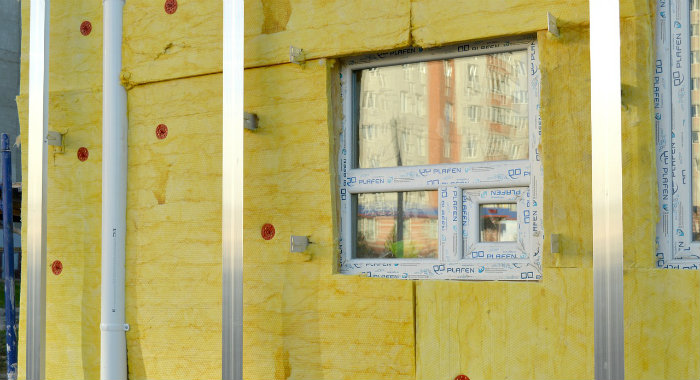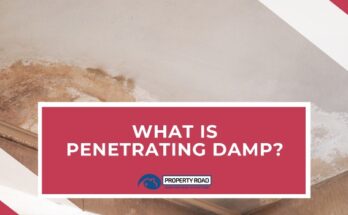If you are worried that you may not be able to keep your home warm in winter, then perhaps making your home more energy efficient will be a sound move.
While many of us will carry out home improvements such as an extension or a loft conversion, we tend not to consider energy efficiency upgrades to make the property warm and lower our heating bills.
However, along with lowering our energy bills, the installation of draught-proofing or insulation will not only help keep the property warm but help alleviate damp and mould issues.
Essentially, if you are considering or are about to undertake a home improvement project, then thinking about home energy efficiency upgrades to be carried out at the same time could prove to be cost-effective and less hassle than trying to install them in the future.
Don’t forget that you can carry out home energy improvements at any time through the year – whether you live in an old house or a fairly new home that may still need some improvements.
Lowering Your Heating Bills With Energy Efficiencies
In addition to lowering your heating bills with energy efficiencies, you can also do a lot to reduce your carbon footprint with these top tips:
Insulate your loft
With decent insulation in your home you could save around £160 every year, the Energy Saving Trust says.
Upgrade your boiler
Replacing an inefficient boiler could save you more than £200 every year on your energy bills. You will also be reducing substantially your home’s carbon emissions since the boiler accounts for 60% of carbon dioxide emissions in a home that is heated by gas.
Always opt for the most energy-efficient boiler and these are rated on a scale of A to G.
Use thick curtains and insulate doors
Sometimes the old-fashioned, simple solutions are the best so hanging thicker curtains on your windows prevents heat from escaping while you can add cheap stick-on insulation strips that will fit down the side of a draughty door to help keep your home warm.
Monitor energy consumption

Smart meters are growing in popularity since they help you monitor your energy consumption and you’ll appreciate how much energy you are actually wasting.
Make every member of the family use it and keep it somewhere so everyone can see how much energy they are using – the kitchen might be the best place.
The big attraction for a smart meter – and at some point in the future, every home will have one – they show how much the energy you are using is costing you. Plus there’s no need for a meter reader to visit any more.
Switch your showerhead
Particularly for those homes that have a water meter, then switching your showerhead to a water-saving alternative will save you money.
For those who spend a lot of time in the shower, then you’re probably using more energy than you realise and if you have a power shower, then you’re using more water to shower for five minutes then you will than having a bath.
Switching a showerhead will reduce the energy and water being used.
Install double or triple glazing
For those homes without double glazing, then once you have it installed you will see your heating bills drop substantially. While double glazing can be expensive to install, it will trap heat inside the property so you will save money over the long term.
If you have double glazing and it needs replacing then this might be the opportunity for installing triple glazing to your home. Is it any good? Well, in very cold countries, such as those in Scandinavia, then triple glazing is fitted as standard – so it’s worth thinking about.
If you live in a very old property, then secondary glazing might be a better – and cheaper – option.
Cavity wall insulation
Around a third of the heat being lost from your home will be through uninsulated walls. By filling a cavity wall you could save around £180 a year to make this a smart move. You will also substantially reduce your carbon emissions too.
Issue Of Insulation Is An Important One

When it comes to home energy efficiencies, the issue of insulation is an important one and along with cavity walls, there are solutions available for older homes.
These are usually properties that were built before 1920 and will have solid walls, so there’s a choice of external or internal insulation solutions.
For those who have solid wall insulation, then they will save around £245 every year from their heating costs in a semi-detached property and much more in detached homes. The investment will be worthwhile – and the rooms will be warmer!
Tips To Make Your Home More Energy Efficient
Other tips to make your home more energy efficient include installing the most efficient lighting possible.
For example, LED lights are not only efficient but they deliver better quality lighting than they did when they were first introduced.
They are now available with varying degrees of colours, brightness and colour temperatures so can have a cool or warm white appearance and suit nearly every light fitting.
Under current building regulations, tradespeople must install low-energy light fittings if they are building a new extension so they can offer to work out how much the rest of your property will cost to be upgraded to this lighting.
Installing Renewable Energy Solutions For Your Home

And then there’s the issue of installing renewable energy solutions to your home. If you’re thinking of a loft conversion then this is a great time to fit solar panels.
Not only will solar panels help reduce your energy bills and carbon footprint, but there are also financial incentives in some parts of the country for installing renewable energy, which also come in the shape of biomass boilers.
Biomass boilers are easy to install though you will need space for it – usually in a garage and you will need somewhere to store the biomass fuel.
Biomass fuel for homes is usually in the shape of pellets. These pellets are slightly cheaper to heat your property than natural gas will be plus you will be lowering your carbon footprint when switching to biomass.
In addition to solar and biomass, another renewable energy option for your home is wind power and you will need to fit a wind turbine for this purpose – they come in various shapes and sizes.
There’s also the option of heat pumps and solar thermal, which will require space outside as well.
One of the big attractions for installing renewable energy is that homeowners could be paid for selling unused energy back to the National Grid under the feed-in-tariff (FIT) though this scheme will close to new applicants from 1 April 2019.
Considering Renewable Energy Options For The Home
However, the bottom line for anybody considering renewable energy options for their home is that the first step to ensure that they get the most out of their new system (which can be expensive to install) is to make their property as energy efficient as it possibly can be beforehand.
It might also be a good idea to obtain an energy performance certificate (EPC) to see just how energy-efficient your property currently is and then carry out the various energy efficiency improvements and then have another survey carried out to see how much these efficiencies have improved your EPC rating. It should be impressive!
If you are thinking of selling your home in the near future, then you’ll need an EPC when you do so to tell a potential buyer how energy-efficient your property is which may prove attractive to many people.
Installing Energy-Efficient Appliances

Along with making structural improvements to the property to boost energy efficiencies, it’s also possible to reduce your energy bills by installing energy-efficient appliances.
This means that when shopping for new appliances, you should look at the energy rating label on each one and then consider the size of the appliance you need.
The energy labels work by revealing how much energy the appliance will use. For example, opt for a 180-litre fridge freezer that is A rated and this will cost around £39 a year for you to run.
However, opt for a much bigger fridge freezer with 525 litres of space but has an A+ rating, then this will cost just £52 to run every year.
This example helps explain why you should really check the energy labels on appliances and products and buy the one with the best energy rating for your needs.
Energy Efficiency Improvements That Can Be Carried Out To A Property
There’s a lot to recommend many energy efficiency improvements that can be carried out to a property and this is a situation where every little really will help because you can also make changes to your lifestyle by opting to install newer, more energy efficient appliances and light bulbs.
Plus you could switch off lights that have been left on in a room with no-one in it, for example, and take steps to use less energy, every day.
The reward for doing so will be lower energy bills and a smaller carbon footprint on our environment.




